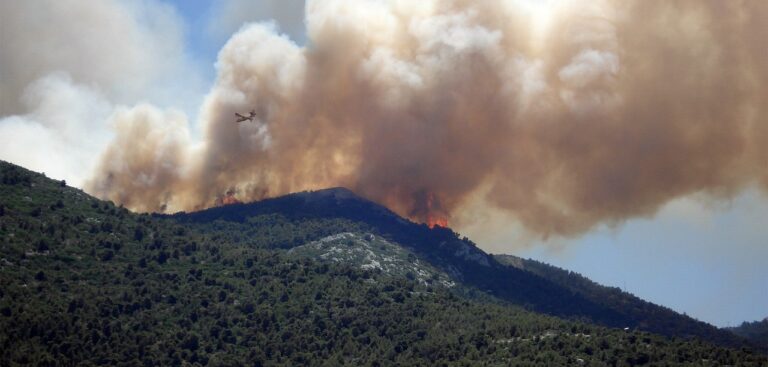The American Geophysical Union (AGU) has published a special interdisciplinary collection of more than 100 papers on wildfires, covering interactions with climate change, impacts on society and public health implications, among other findings.
The “Fire in the Earth System” special collection uniquely focuses on the full array of fire’s impacts on people and our world and the diverse research areas that are currently being pursued, all on a single website.
The collection comprises papers from both hybrid and open access journals, with all non-open access papers freely accessible until August 15, 2023.
Amy East, geologist at the US Geological Survey and the convening editor of the special collection, said, “The collection is almost like a clearinghouse for a huge variety of high-quality new research. Just to skim down the collection’s web page gives you a sense of the tremendous extent of impacts wildfires have on communities and the different fields of research.”
Every continent is studied, including Antarctica, as are the atmosphere and oceans. Some papers present case studies of individual fires; others delve into broad regional or global impacts. Researchers employ ground, airborne and satellite observations that provide insights into what happened from last year to 22,000 years ago. Chemistry, physics, meteorology, oceanography and solid Earth processes are all represented.
Human impacts such as public health and damage to air and water quality are also surveyed. One of the largest topics is the consequences of a warming and drying climate in Earth’s fire-prone regions, such as Australia, the Mediterranean and the US West. Some papers report new methods and technologies to measure and understand fire behavior.
Examples from the collection include:
- A study of Australia’s megafires in 2019-2020 found that wildfire emissions pushed tropical clouds and thunderstorms northward toward the equator, in much the same way that a major volcanic eruption in the Southern Hemisphere would. The finding suggests that southern wildfires could affect global weather by influencing the occurrence of El Niño and La Niña events.
- In the USA, most large fires occur in the West, but the harm they cause doesn’t stay there. Researchers found that since 2006, about three-quarters of both hospital admissions and deaths from exposure to wildfire smoke occurred in the eastern USA. A different study showed a significant correlation between the arrival of wildfire smoke and emergency room and other hospital admissions five days later.
- After a wildfire, even normal rainfall can cause flooding and debris flows in burned areas. Researchers found that in Southern California, emergency managers should expect highly destructive post-fire debris flows every 10 to 13 years — about as often as the region gets a magnitude 6.7 or greater earthquake.
- Climate change is expected to make Asian monsoons stronger, but will the extra moisture suppress wildfires or increase them by growing more plants to fuel bigger fires? Scientists examined 14,800 years of mud from the bottom of a Chinese lake to conclude that in eras when China had heavier monsoons, wildfires increased.
To visit the complete Fire in the Earth System collection, click here.



